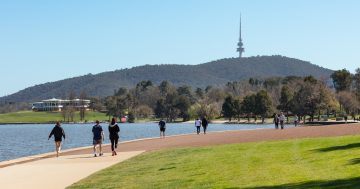
The national life expectancy has dropped slightly, but in the ACT is higher than elsewhere. Photo: chasingafterdear.
Men and women living in the Australian Capital Territory have the highest life expectancy in the country, according to new figures released by the Australian Bureau of Statistics.
The ACT has the highest male life expectancy of 81.7 years, followed by Western Australia (81.6) and Victoria (81.5).
The ACT and Western Australia jointly have the highest female life expectancy of 85.7 years, followed by Victoria (85.4) and New South Wales (85.2).
For two years in a row, however, ABS data has shown that life expectancy in Australia has fallen.
Figures released on Friday (8 November) reveal life expectancy in Australia has fallen slightly for the second straight year, dropping 0.1 per cent for men and 0.2 per cent for women.
ABS’s head of demography Beidar Cho said a boy born in Australia today was expected to live to 81.1 years and a girl to 85.1 years.
“The years 2021-2023 saw the highest number of COVID-19 deaths, with 15,982 in Australia, which was up by 4100 from 2020-2022,” she said.
“As a result, life expectancy has fallen by 0.1 years for men and 0.2 years for women over this period.
“Despite this decrease, Australians still have a higher life expectancy than many comparable countries, like New Zealand, the United Kingdom, the United States of America, and Canada.”
Today, a 60-year-old Australian man can expect to live another 24.2 years, and a woman another 27.1 years.
This is longer than life expectancy at birth, the ABS states, as 60-year-olds have already survived the first several decades of life.
The Northern Territory had the lowest life expectancy for both men (76.4 years) and women (80.4).
It, however, saw the largest rise in male and female life expectancies from 2013-2023, with 1.5 years and 1.2 years respectively.
The ABS released two other reports on Friday, detailing data on jobs and income for nearly 2500 regions across Australia and more than 500 industries in 2021-22.
They showed that regions with the most pandemic-related impacts, such as from lockdowns and business trading restrictions, saw the greatest changes in the total number of jobs worked.
This was particularly the case in capital cities.
The two reports, Jobs in Australia and Personal Income in Australia, use tax data to produce detailed geographical insights into how the COVID-19 pandemic shaped labour markets and communities, and their industries.
ABS’s head of labour statistics Bjorn Jarvis said the data offered new in-depth information for communities, adding to a series of annual snapshots, and contained more granular labour market information than was possible from other data.
“For 2021-22, this data provides new insights into the impact of COVID-19-related disruptions, and how they changed from 2020-21 across different regions, industries, businesses, and groups of workers,” he said.
“As lockdowns lifted earlier in 2021-22 and restrictions eased, labour market activity rebounded.
“As a result, there were 22.7 million jobs worked at some point during 2021-22, up more than 1.9 million jobs from 2020-21.”
The number of people who worked for most or all of the year (40 or more weeks) grew by a more typical 3.1 per cent.
In contrast, shorter job durations, of one to 13 weeks, 14-26 weeks and 27-39 weeks, were all more than 20 per cent higher than in 2020-21.
Original Article published by Chris Johnson on Riotact.











